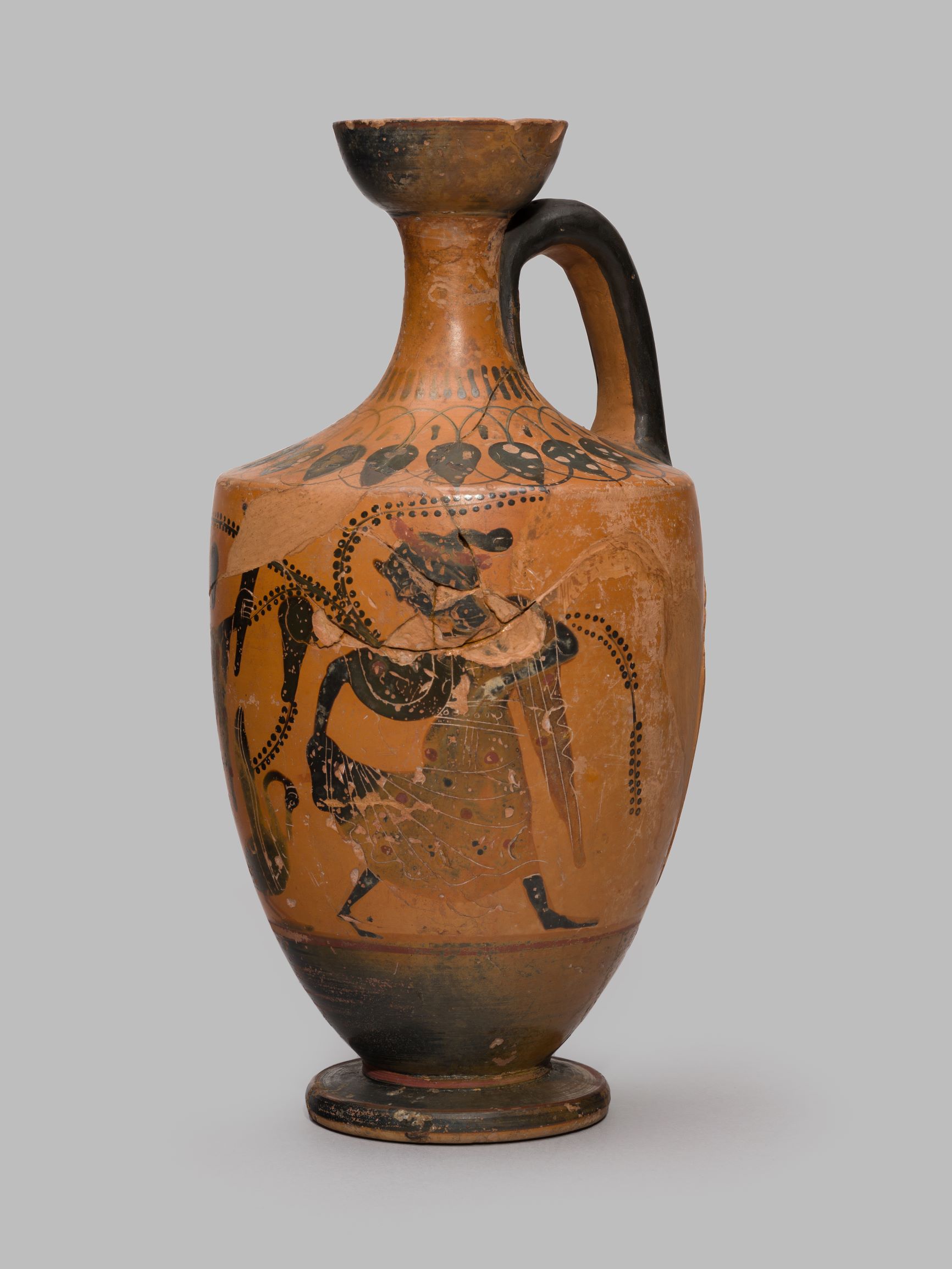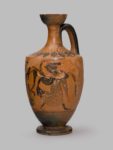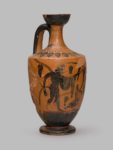
Lekythos [Gr14]
Athenian Black-Figure, c. 500 BC
Painted terracotta (h. 20.5 cm, d. 9.9 cm), partially restored but chipped and worn, with parts of the surface badly damaged
A satyr advancing towards a maenad, between them a swan with wings raised, branches with leaves and bunches of grapes behind. A pattern of hanging lotus buds around the shoulder.
Vases of this shape are known as lekythoi, and were used to hold oil for household functions or for pouring offerings. An enormous number have survived as they were often left as offerings at graves. This example is poorly preserved, with cracks, missing colour (for example on the maenad’s skin where the remnants of white pigment can be seen), and a chipped surface adding to the discolouration from uneven firing when the vase was made.
Although the god Dionysus does not actually appear on this vase, it is filled with Dionysiac motifs and themes. Satyrs were Dionysus’ mythical companions, and revelled in drunkenness, music and dancing. They often attempted to seduce women, particularly maenads, the female followers of the god. The grapes in the background are a reminder that Dionysus was the god of wine (though the relevance of the swan is not immediately apparent). The presence of this imagery on pottery used mainly in domestic and funerary contexts suggests the influence of the cult of Dionysus beyond the symposium and male drinking culture.
Literature: J. Falconer and T. Mannack, Corpus Vasorum Antiquorum: Great Britain, Fascicule 19: Winchester College (Oxford, 2002), p. 5, plate 4.4-7; Winchester College Memorial Buildings: Department of Classical Art (Winchester, 1909), p. 18 (no. 46)
Provenance: Unknown, at Winchester College by 1909
Location: Treasury, Gallery 3

